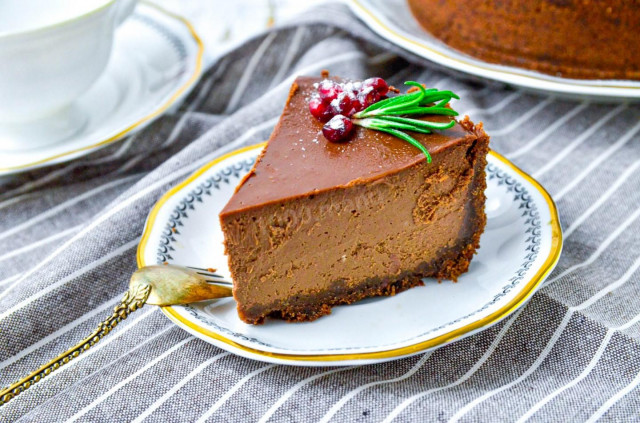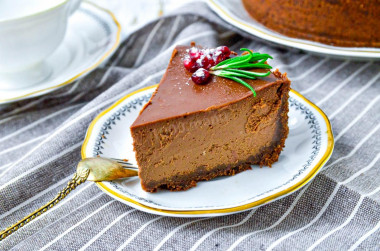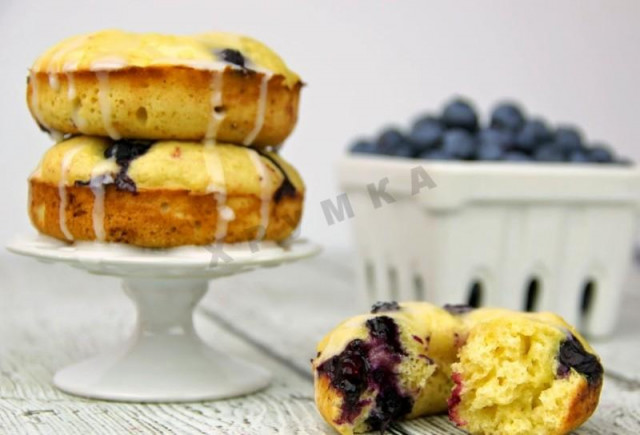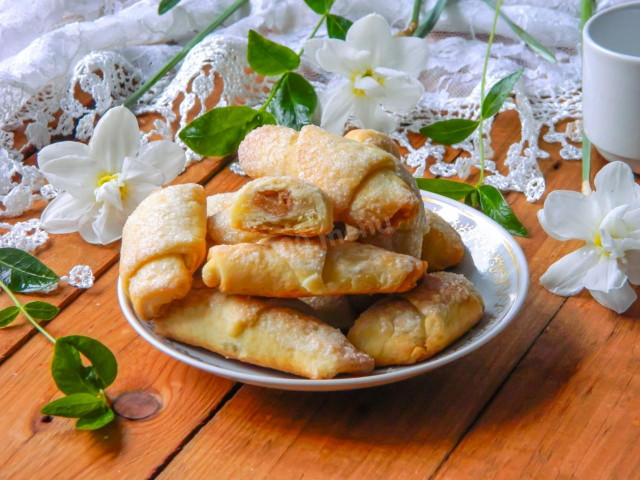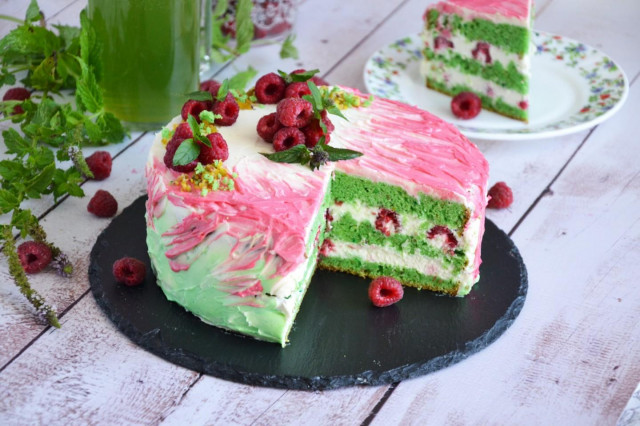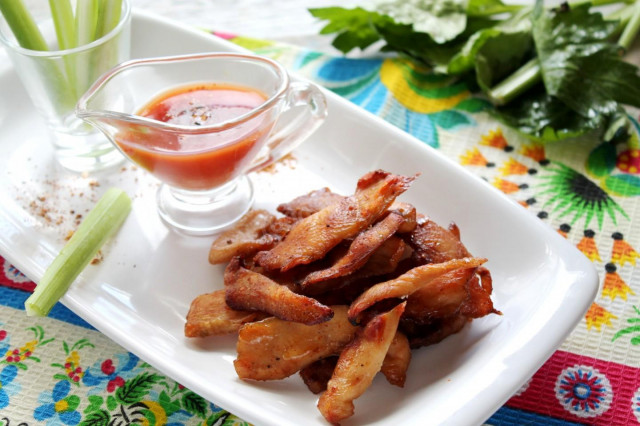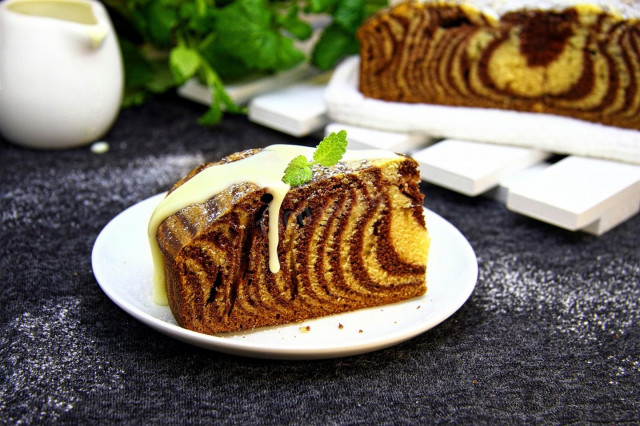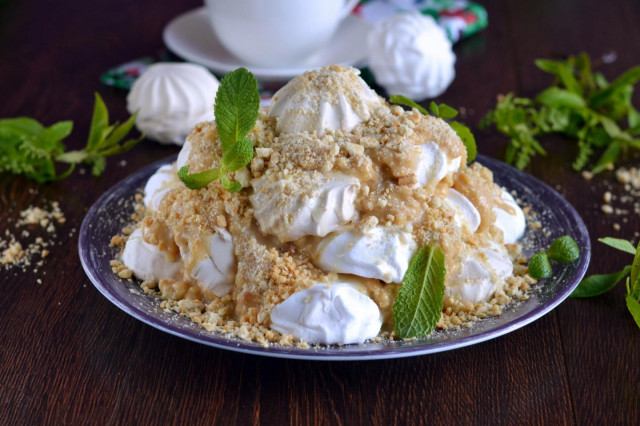Composition / ingredients
Step-by-step cooking
Step 1:
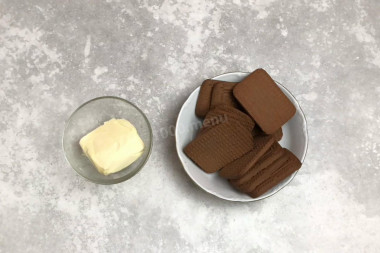
How to make Chocolate Cheesecake? Start making cheesecake from its base. How to make a foundation? Prepare the products. Since the cheesecake is chocolate, then it's better to take chocolate cookies. If you have ordinary cookies, then add a little cocoa powder to taste and a spoonful of milk. Butter should be of high quality, corresponding to GOST.
Step 2:
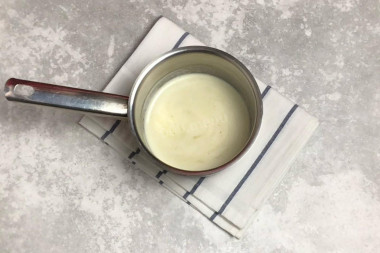
Butter should be melted in any of the ways described at the end of the recipe. I heated it on a small fire in a small ladle.
Step 3:
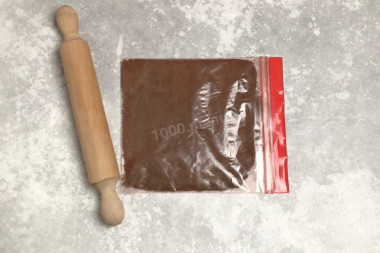
Chop the cookies into crumbs also in any convenient way. You can use a combine harvester, you can use a blender or a rolling pin, as I did. Put it in a tight bag and beat it properly with a rolling pin.
Step 4:
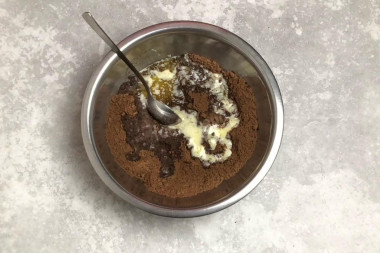
Transfer the cookie crumbs to a large bowl. Pour the butter into the crumbs.
Step 5:
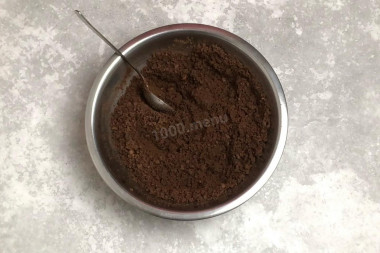
With a spoon, mix the cookies and butter well, you should get a sticky mass. If it seems dry to you, add a little milk.
Step 6:
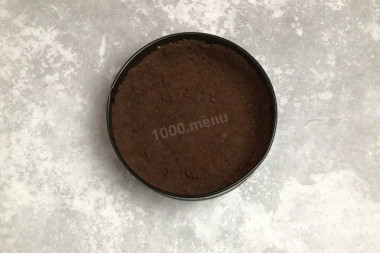
Form the foundation. The bottom of the mold (I have it with a diameter of 20 cm, detachable) is lined with parchment paper. Pour about 2/3 of all the crumbs onto the bottom of the mold and use a glass to tamp it with a thick layer. Pour the remaining part on the sides and form the sides. You can make cheesecake without sides, then pour all the crumbs on the bottom.
Step 7:
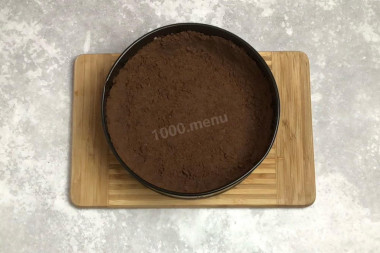
Bake the base for 15 minutes at 170 degrees in the oven. Then remove the mold with the base and leave to cool. Do not turn off the oven, the filling is done quickly. Reduce the heat to 130 degrees.
Step 8:
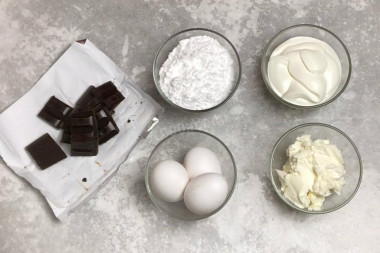
How to make a filling? Prepare the products for her. Take the fattest sour cream. You can replace it with cream, but also fatty. You can take both bitter and milk chocolate, the main thing is that it should be high-quality chocolate with cocoa butter, and not a chocolate bar. All products must be at room temperature. Remove sour cream, cheese, eggs from the refrigerator for 30 minutes. Choose only high-quality fresh products for this recipe, without milk fat substitutes.
Step 9:
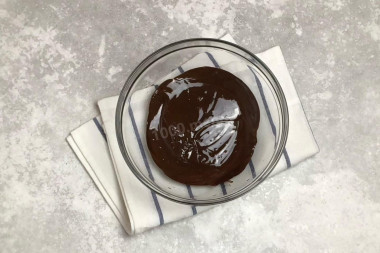
Melt the chocolate. How to melt chocolate? Break it into pieces and put it in a bowl. You can heat it on the stove, in a water bath, or in the microwave. Make sure that the chocolate does not overheat — under the pan, if you heat it in a water bath, make minimal heating, and in the microwave, choose a short time and medium mode.
Step 10:
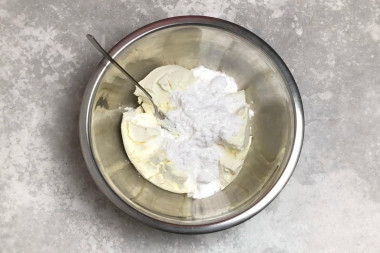
Mix the cheese and powder until smooth. The mixer does not need to be used — the mass needs to be mixed, not beaten! Otherwise, bubbles will appear in the filling and the finished cheesecake will look like a leaky cheese.
Step 11:
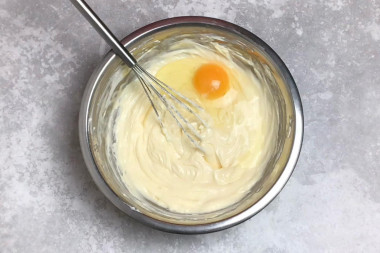
Start driving the eggs into the cheese mass one by one, stirring it very well after each egg. It is most convenient to do this with a whisk or a spatula. Important! At the stage of adding eggs, the mixer cannot be used! Take your time, mix smoothly and avoid whipping the mass, otherwise it will become liquid. (Note that if the cheese base is oversaturated with air bubbles, then the cheesecake may swell and crack when baking)
Step 12:
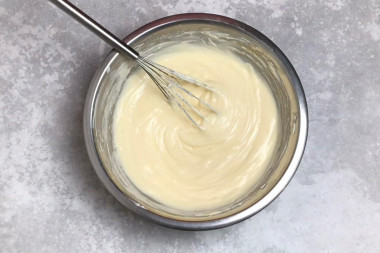
A smooth homogeneous mass should be obtained.
Step 13:
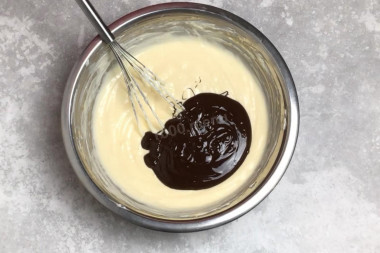
Add the cooled chocolate, mix well.
Step 14:
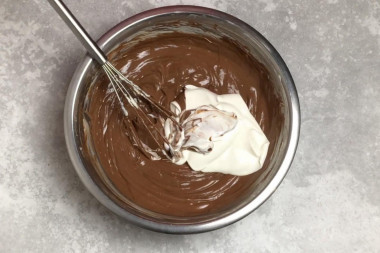
Add sour cream. Gently mix with a whisk, do not whisk in any case! As a result, the filling can turn out to be of different consistency: from liquid flowing to quite dense, like sour cream. The density of the egg-sour cream-cheese mixture depends on various reasons: even if the cheese is of high quality, it may be of different density and humidity, sour cream of the same fat content may be more liquid or thicker, the selected category of eggs also affects.
Step 15:
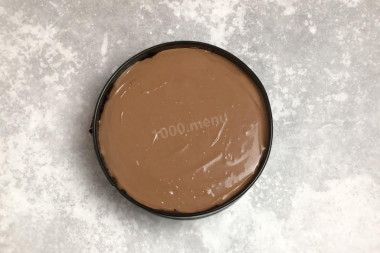
Pour the filling onto the cooled base, level the top. Lightly tap the form on the table to get out excess air bubbles.
Step 16:
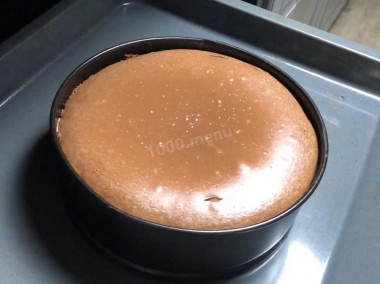
Bake cheesecake for 1.5-2 hours at a temperature of 130 degrees, top-bottom mode. Put a container of water on the bottom. After an hour and a half of baking, start watching the top of the cheesecake. The cheesecake should not turn red, the top should grab, but at the same time remain mobile. As soon as this happens, turn off the heating.
Step 17:
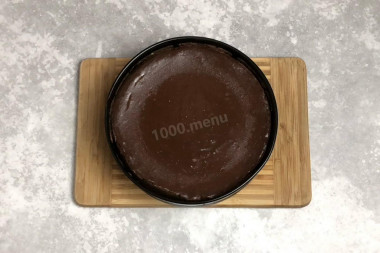
Chill the cheesecake in several stages. This is important! Immediately after turning it off, leave it in the oven for an hour with the door ajar, or longer. (I took it out when the oven was almost cold). Then hold at room temperature until the mold cools completely, covering it with a napkin. Then run a thin knife along the walls of the mold and put it in the refrigerator overnight. In the morning, carefully remove the mold and decorate as desired. Bon appetit!
This number of products is designed for a shape of 20 cm in diameter.
Butter can be melted in the microwave or in a water bath.
How to melt butter in the microwave?
Cut the butter into small pieces and place it in a special container. To prevent the oil from splashing when heated, cover the oil vessel with a paper towel. The oil should be melted either at the lowest power or in defrosting mode. At first, five seconds will be enough. Next, if the butter has not melted yet, set it again for 5 seconds and start the microwave. Repeat the process several times until the desired result.
How to melt butter in a water bath?
You will need two containers of different diameters. Pour water into a large one and put it on the stove. Place the smaller container on top so that it is submerged in water by about half. Put the sliced butter into it. Under the influence of boiling water, the oil will begin to melt. Stir the oil slightly to speed up the process. As soon as the pieces of oil are completely dissolved, remove the container from the stove.
Be sure to wash the eggs before use, as even the seemingly clean shell may contain harmful bacteria. It is best to use food detergents and a brush.
Keep in mind that everyone's ovens are different. The temperature and cooking time may differ from those specified in the recipe. To make any baked dish successful, use useful information about the features of ovens !
Caloric content of the products possible in the composition of the dish
- Sour cream of 30% fat content - 340 kcal/100g
- Sour cream of 25% fat content - 284 kcal/100g
- Sour cream with 20% fat content - 210 kcal/100g
- Sour cream of 10 % fat content - 115 kcal/100g
- Sour cream - 210 kcal/100g
- Chicken egg - 157 kcal/100g
- Egg white - 45 kcal/100g
- Egg powder - 542 kcal/100g
- Egg yolk - 352 kcal/100g
- Ostrich egg - 118 kcal/100g
- Butter 82% - 734 kcal/100g
- Amateur unsalted butter - 709 kcal/100g
- Unsalted peasant butter - 661 kcal/100g
- Peasant salted butter - 652 kcal/100g
- Melted butter - 869 kcal/100g
- Bitter chocolate - 539 kcal/100g
- Cream cheese with 50% fat content - 349 kcal/100g
- Powdered sugar - 374 kcal/100g
- Shortbread cookies - 716 kcal/100g

